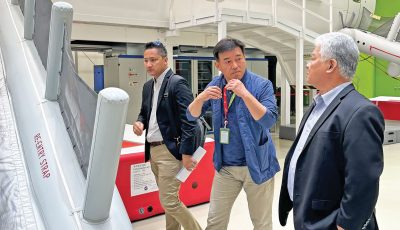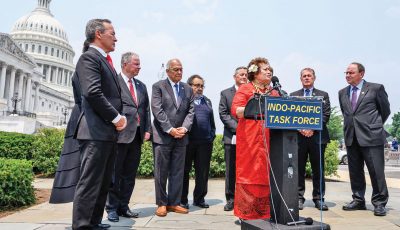Quakes and fire, drought and water
When mapping the consequences of quakes and droughts, floods and fires, the human cost has become a must. When we promote the perspective of viewing everyone as individuals rather than just a numerical entry in a group, the value of an individual becomes paramount. This runs counter to the virtue long held in social groups that one’s life laid down for a race or an ethnic bunch is more heroic than just the mere expenditure of the same sometimes on behalf of another.
I happen to think that an individual is not filled full save in the company of and in collaboration with peers but that is a choice rather than the moral imperative of an ethical ought-ness. Likewise, in mapping out the human cost, whether it is the personnel-inflicted conflagrations in Gaza, Iraq, and Ukraine, it is helpful to imagine not an abstract number but snuffed lives or living casualties often pictured short of limbs. They have a face, and definitely, a name.
Increasingly, in covering disasters on TV, the human factor is often covered if only because a broadcast watcher can readily identify with a person rather than an abstract number. Admittedly, we get irritated when the newscaster injects through the tone of his/her voice what ze feels as an emotional response to an event rather than the content of the news through pictures and sounds that establish emotive content itself. But that’s what distinguishes professional broadcast journalism from its dime-a-dozen cousins that relies on tugging at our sentiments.
Quakes that drew fire visited Yunnan Province last week where a shudder that otherwise would only get a shrug of the shoulder managed to dislodge rocks and caused landslide of uncharacteristic proportions that the area in Ladian is still reeling from the rocks that was not confined to the cradle. We do not mean to make light of the disaster. Chinese workers are still trying to create water drainage for a river that has since become a lake, threatening residents downriver should the water level rise some more as rain has yet to abate from the headwaters.
The landslides were bad enough. The flooding added to the destruction of crops, penned animals, and homes. Neighboring province to Yunnan, Guizhou of the Yi minority tribes that might be cousins to our Philippine mountain folks got the brunt of the unceasing rain and caused flooding where ladies used to walk down the lanes with parasols. Guangxi where Guillin with her famous kartz and Lijiang that rafts down to tourist town Yangzhou nestled in lighted hills at night (quite a spectacle), and Hainan with her tropical shores had not been spared the fierce treatment of typhoons.
Drought hit the foothills of California and Colorado, as well as Canada’s Northwest territories that lit up fires for our satellites to picture. We all heard of that explosion out of Kunshan in Jiangxi (that’s west of Shanghai for the geography-challenged) from a factory manufacturing aluminum wheel caps for General Motors.
From the northeast to the northwest, all we got were dry winds this season. Qui Tian (autumn) kicked in August 11 and though dusk to dawn might feel a little cooler, the days are still summer warm. The aridity has been exceptional this year, making the sigua (watermelon) an abundant and desired commodity in every street corner, from Urmuqi of Xinjiang to Dandong of Liaoning. It has the added attraction of being an aphrodisiac!
We had a 30-minute drench in Shenyang the other day, with the full compliment of accompanying thunder and lightning playing loud orchestral percussion, plus a downpour that lashed and peppered car roofs. One can tell the plastic touch is in the drainage as something clogged up the system again; one of the streets at my back in a fairly elevated area of the city was flooded from the accumulated rain.
The environmental disasters that have been visited upon China since it became the manufacturing factory of the world are considerable. The cheapening of American consumer goods has also occurred as the timeframe for programmed obsolescence got shorter, and price became the gauge for commodities rather than quality. Only the one percent of the U.S. population shop from quality shops; the rest of us go for the bargain, the discount, and the sale.
We pointed recently on the reality of trash and how China is no longer Los Angeles and Brooklyn’s trash bins. Worldwide, we have polluted our planet, so there is no point belaboring the point, nor pointing fingers on who is to blame. No one has pristine hands!
What China, however, is doing in its China Dream that has become the organizing principle of its internal and external affairs (can’t help point to Obama’s foreign policy description of “Don’t do stupid stuff” as inadequate, according to Madame Hillary), is to shift from producing products “Made in China” to ones that it designs so it can be labeled as “Created in China”.
The rhetoric is ahead of the reality but Zhongguo has the time!



























